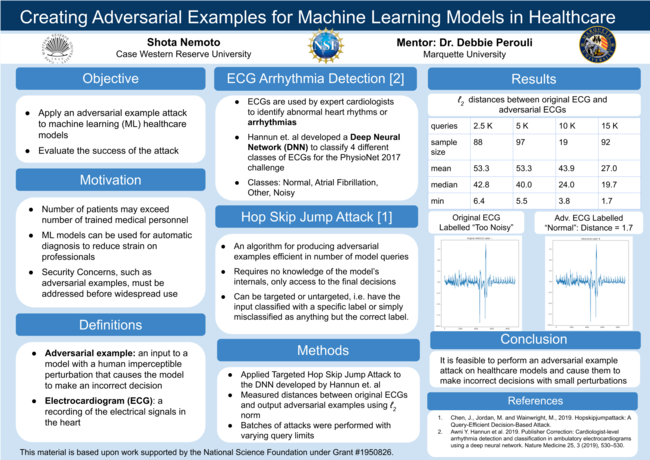Creating Adversarial Examples for Machine Learning Models in Healthcare
Student Researcher: Shota Nemoto
Mentor: Dr. Debbie Perouli
Project Description
In the near future, the U.S. will experience a severe shortage of Registered Nurses. A proposed solution is the development of Robotic Caregivers (RCGs), both service and social robots, which will be able to provide care autonomously. Commercial service robots that are currently available, such as Temi and Loomo, provide APIs for developers to create applications for these RCGs. Many applications will input sensor data into machine learning models, which may leave it vulnerable to attack from an adversary attempting to retrieve a patient’s personal data or fool a model into mislabeling or misclassifying an input.
The objective of this project is to evaluate the performance of an adversarial attack on these robots. The attack being evaluated is an evasion attack called Hop Skip Jump attack. The model the attack is evaluated on is a neural network developed for detecting arrhythmia using an electrocardiogram.
Poster
Milestones and Goals
| Week | Description |
|---|---|
| 1: Orientation |
|
| 2: Initial Reading |
|
| 3: Form Research Hypothesis |
|
| 4: Design Experiements and Methodology |
|
| 5: Begin Poster and Paper Creation |
|
| 6: Implement System |
|
| 7: Run Experiments |
|
| 8: Evaluation |
|
| 9: Finalize Poster and Paper |
|
| 10: Present Research |
|
